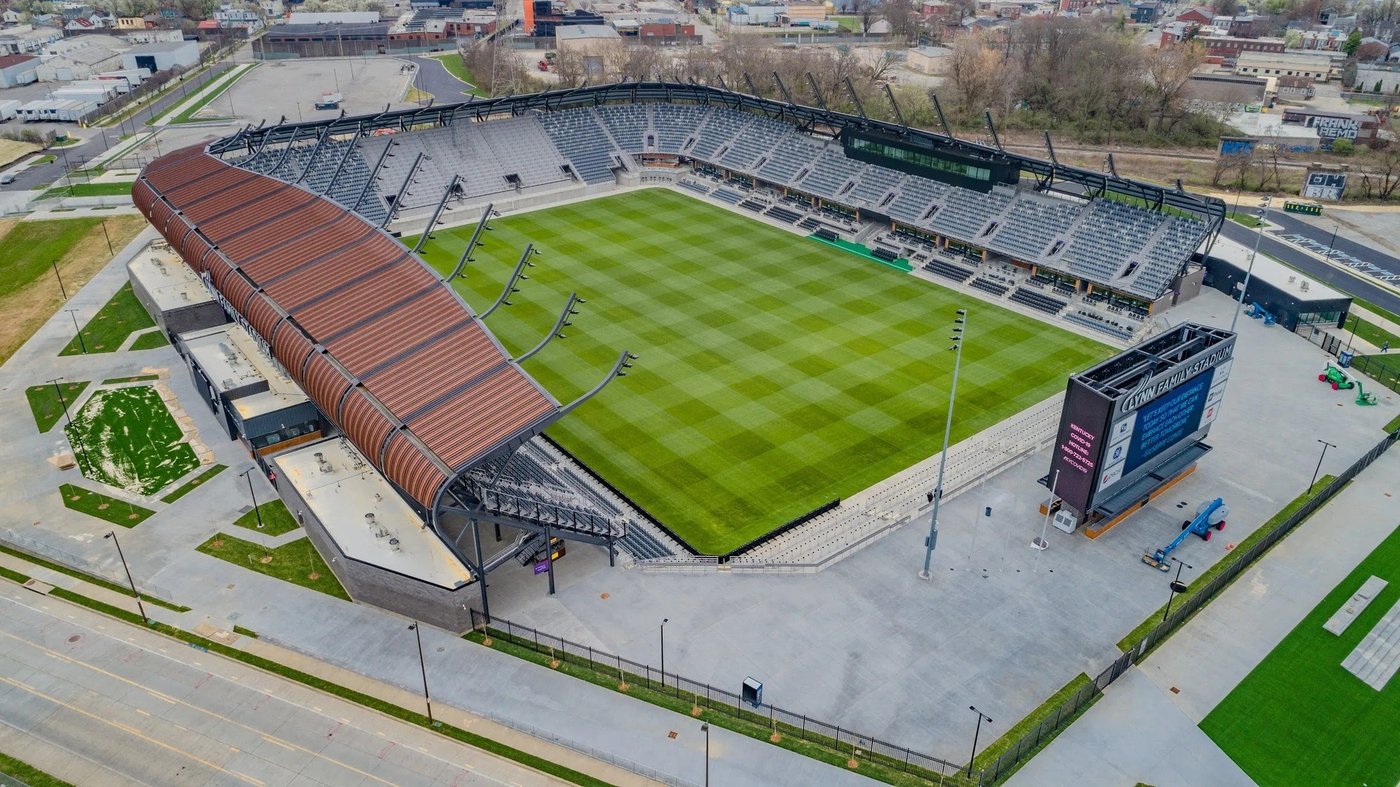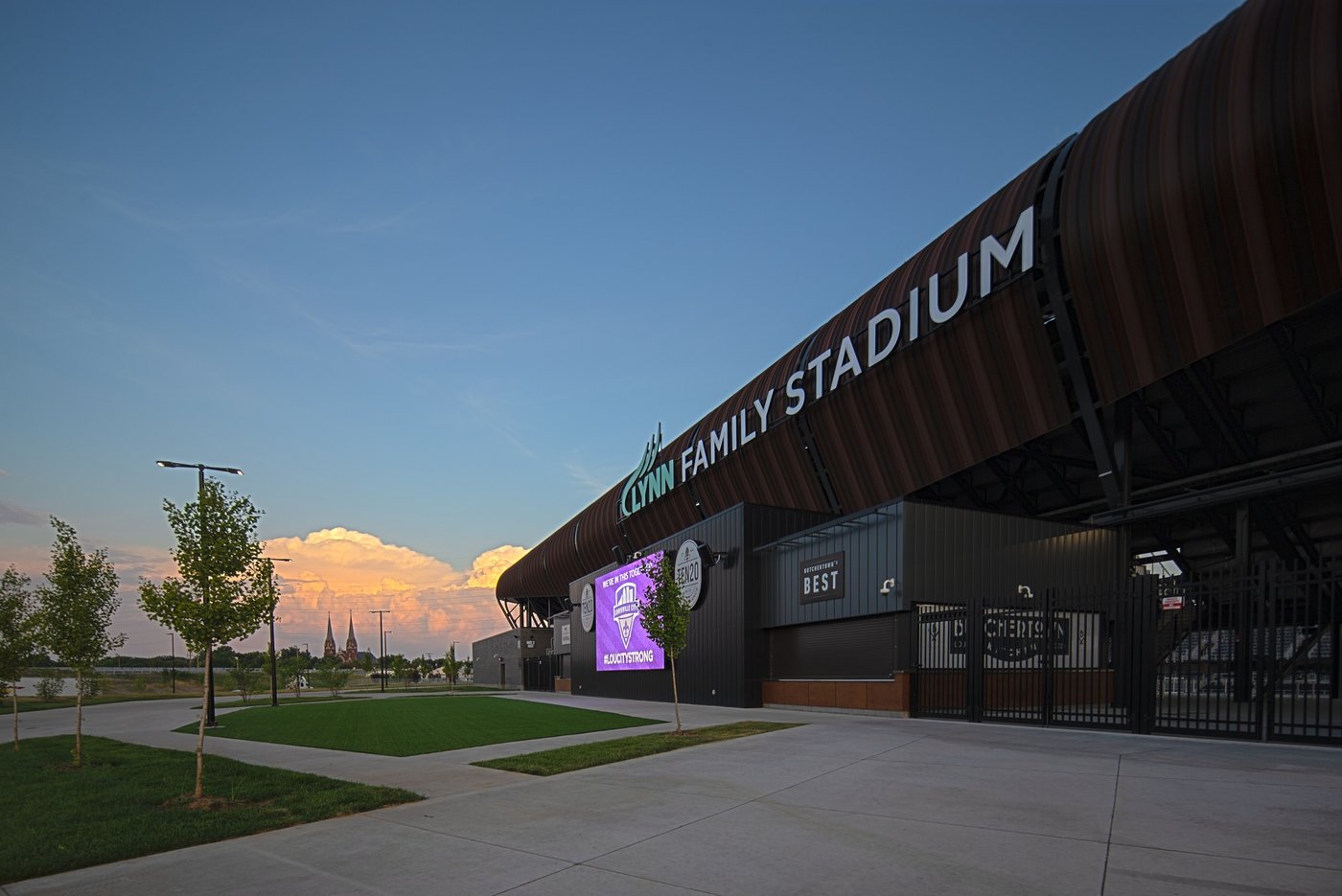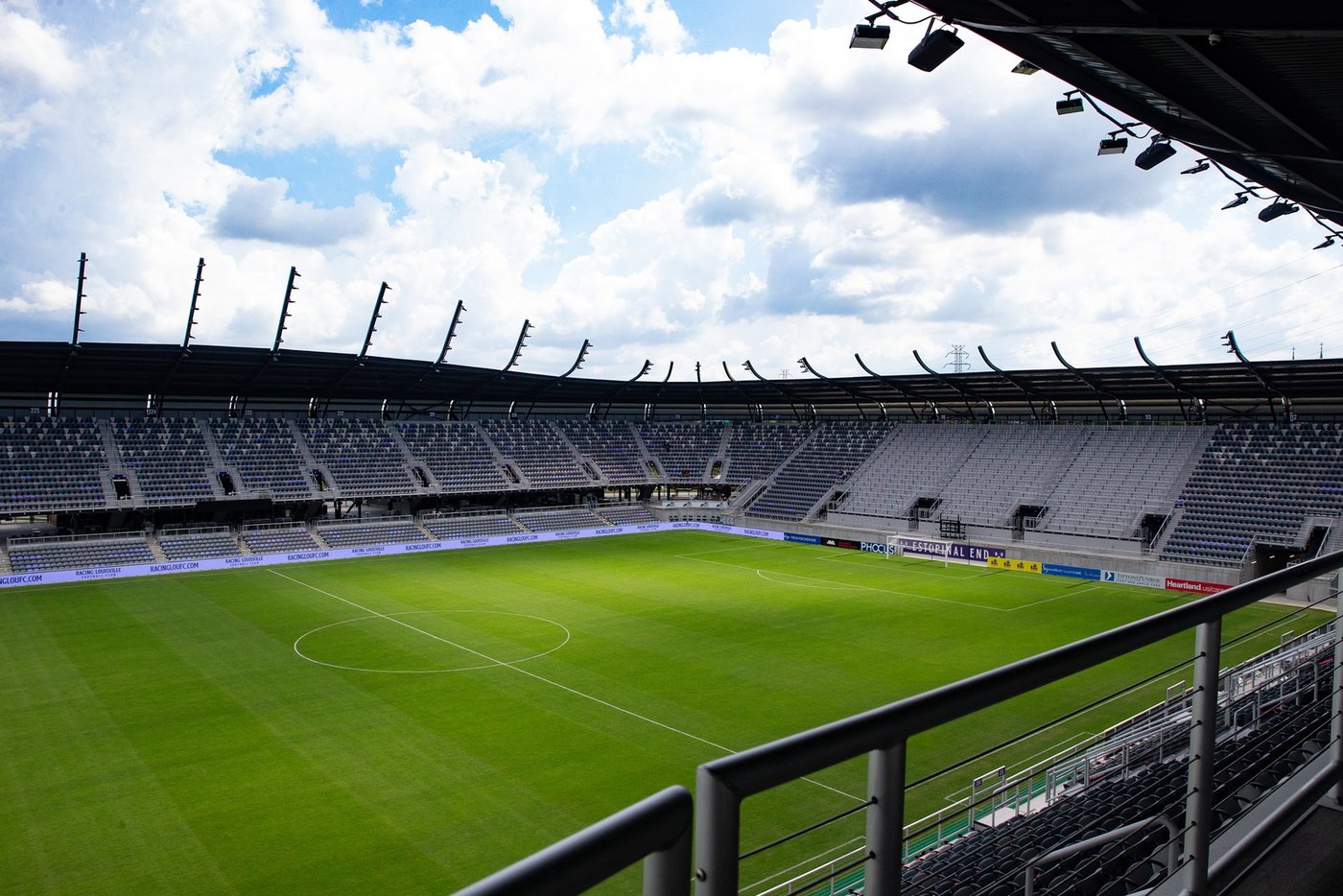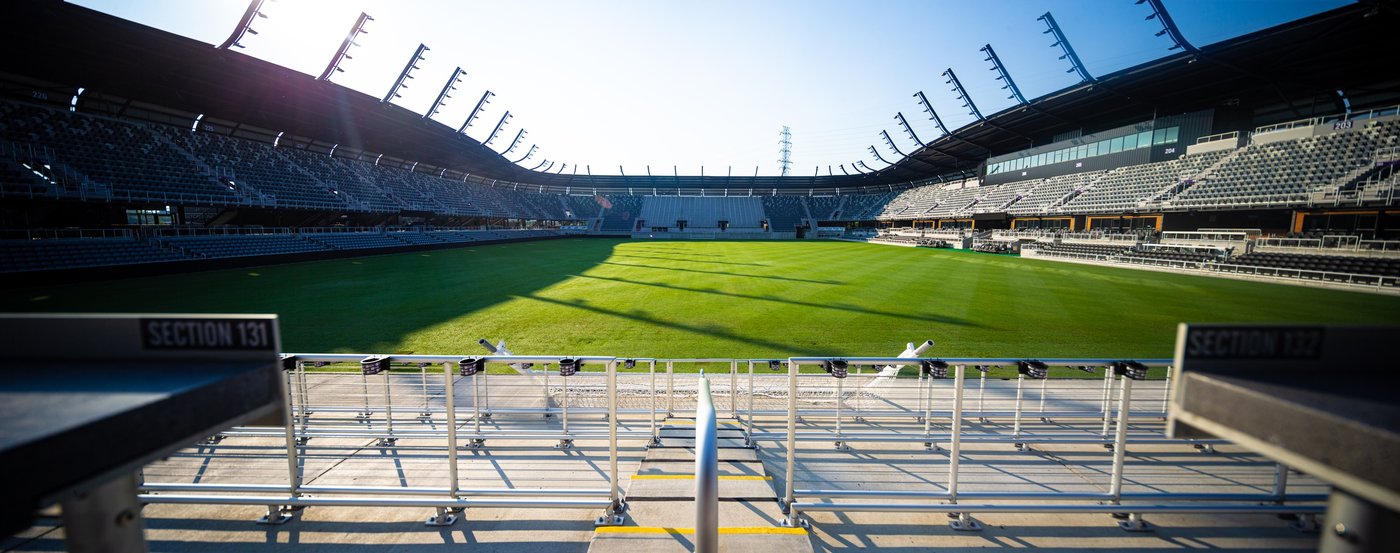New stadium: Fresh life in old butcher town
source: StadiumDB.com [MK]; author: michał
 Former industrial area of Louisville is being transformed as we speak. First comes the stadium and it’s worth checking out. The closest seat is just 4.6 metres away from the field!
Former industrial area of Louisville is being transformed as we speak. First comes the stadium and it’s worth checking out. The closest seat is just 4.6 metres away from the field!
Advertisement
When Louisville City FC was established in 2014, the baseball-use Slugger Field became their first home. And while it could become a temporary home, it was no long term solution, particularly because of non-standard field dimensions. That’s why by 2017 there was already a relocation plan. Geographically, the change of site was only a minor one as both locations are east of downtown, just 900 metres (3,000 feet) apart, separated only by local highway hub. The new stadium was to replace old industrial facilities in Butchertown.
The venue’s capacity was to reach 10,000, with potential for expansion to 20,000, should the club advance from USL to MLS. Budget? Modest among new football-specific stadiums, at $50 million. But when Lou City began growing in terms of popularity, the plans were upgraded to 14,000, and so rose the budget, to $65 million. Eventually even more capacity was squeezed from the design, reaching 15,304 places. Of those, 11,600 are individual seats, while standing room was created behind each goal. The potential for expansion was retained.
 © Higher Perspective, Messer Construction
© Higher Perspective, Messer Construction
The stadium’s layout is, for spatial reasons, based on the north-west – south-east axis. Three continuous stands are horseshoe-shaped, with an opening in the west, towards the Ohio River. This allows some of the visitors to enjoy a view of the city centre. While robust, the stands are not uniform. The sides are double-tiered, while ends have single tiers.
The layout is distinctive for some American association football stadia, with the lower tiers limited to a few rows (4-6 in this case). This way, the upper tier is even closer to the field. Incidentally, the closest seat at the stadium is just under 4.6 metres away from the field! As the field is sunken, lower rows are accessible from ground level and fans can enjoy a view of the field already from the public concourse behind.
 © EM Dash Photography, Louisville City FC
© EM Dash Photography, Louisville City FC
South stand is the main one, accommodating 18 private boxes between the two tiers. In the east there’s a steep single tier with three sections of safe standing for the most vocal fans. Both corners in the east have bars overlooking the field. The west end is also distinctive, because instead of regular standing terrace there are four wide decks created, for fans enjoying a pint of beer, served at the large bar created in the foot of the giant screen (264 m2).
Because the most exposed facades of the stadium are in the west and north, this is where fewer facilities were created outside the ground. Instead, open plazas invite fans to gather before/after games, as well as on non-matchdays. There are large screens facing both the north and west side. Meanwhile, the south and east stand are less exposed and this is where much of the hospitality and commerce is located (single-level pavilions of roughly 1,800 m2 are attached to both).
 © EM Dash Photography, Louisville City FC
© EM Dash Photography, Louisville City FC
Because the stadium was created in a historically industrial area, architects at HOK decided to embrace its raw structure instead of hiding it. This industrial style can be felt across the stadium, not only because of the precast steel auditorium. As much as 1,500 m2 (16,000 square feet) of aluminium panels were installed, softened somewhat by addition of 500 m2 (5,200 square feet) of wood panels with a fitting copper finish.
This approach is consistent with the roof, which is also covered with aluminium tin, in two shades of brown. The roof’s line is dynamically formed both outside the stadium and within the inner edge, strengthened by height of floodlight masts growing towards centre of the field. While it doesn’t cover everyone, the roof offers shelter to most seated fans and ensures protection from wind in the upper stands.
 © EM Dash Photography, Louisville City FC
© EM Dash Photography, Louisville City FC
Formally, work on site began in August of 2018, however at the time design documentation wasn’t complete and most effort was put into clearing and excavation. Only in November actual construction went forward and the stadium was delivered ahead of schedule (also within budget), on March 3, 2020. Eventually, the building is to be surrounded by additional commercial uses, creating the Butchertown Stadium District.
Already in 2019 the naming rights were secured. In a tradition more familiar among university stadia, the venue was named individually after Dr. Mark and Cindy Lynn. But, because the Lynns already have a stadium by their individual names, the Lynn Family Stadium was chosen. The contract was signed for 10 years, during which Lou City will share the stadium with their sister team, women’s Racing Louisville.
Advertisement
 StadiumDB
StadiumDB